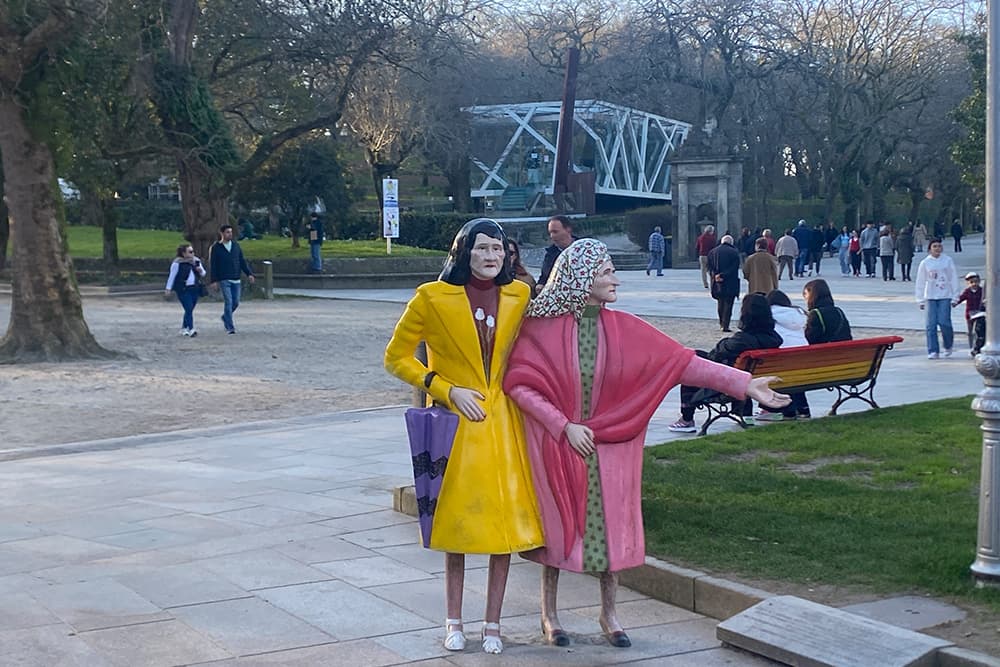The Alameda de Santiago de Compostela houses one of the most famous sculptures of the city: the sculpture of the two Marías. It is one of the most visited and photographed works. But these two colorful women hide a story of suffering, resistance and freedom that inspires many people today.
Their names were Maruxa (1898-1980) and Coralia (1914-1983). Fandiño Ricart. They were two sisters in a large family of 13 children. Despite their age difference, they were always very close. Many of her siblings were prominent members of the National Confederation of Labor (CNT), an anarcho-syndicalist entity.
With the outbreak of the Civil War, the activists of the Fandiño family were repressed and persecuted with arrest warrants and were forced into hiding or exile. One of them was killed.
The regime’s authorities, failing to find his brothers, decided to harass the women of the family instead. The sisters were subjected to years of persecution, mistreatment and even torture to extract information from them. They even boycotted the family business, which led the Fandiños to turn to charity.
These violations of their rights could have caused sequels and traumas that would lead to atypical behavior on the part of the sisters.
The rebelliousness of the sisters
Maruxa and Coralia, who were called crazy, would go for a walk arm in arm every day around two o’clock in the afternoon. Hence, many nicknamed them “As dúas en punto”, two o’clock. During their tours, they would surprise passersby with outlandish and colorful attire, very eccentric for the time.
Not only that, but they smoked and complimented the college students they came across, something that was unthinkable for the prototypical woman of the time, who had to maintain an exemplary behavior in public.
The rebelliousness shown by the two Marías marked all their neighbors, who saw in them an example of freedom and resistance to the dictatorship.
Maruxa, the eldest, was the first to pass away in 1980. After losing her sister, Coralia went to A Coruña, although she would lose her life only three years later.
A walk to remember
After a lifetime of being persecuted and beaten, the city of Santiago de Compostela now remembers them with the respect they deserve. Since 1994, their walks have been immortalized with a sculpture by César Lombera in which the sisters can be seen arm in arm walking along the Alameda, as they did every day at two o’clock sharp.
The City Council of Santiago also installed a commemorative plaque to remember the Fandiños.
Today, and after the efforts of the Ateneo de Santiago, Maruxa and Coralia rest together under the same tombstone in the cemetery of Boisaca, as they wanted.






0 Comments